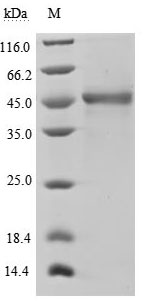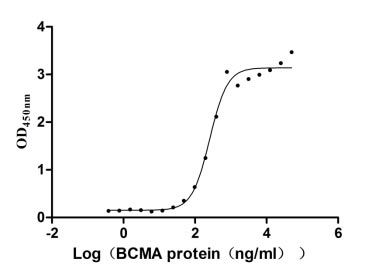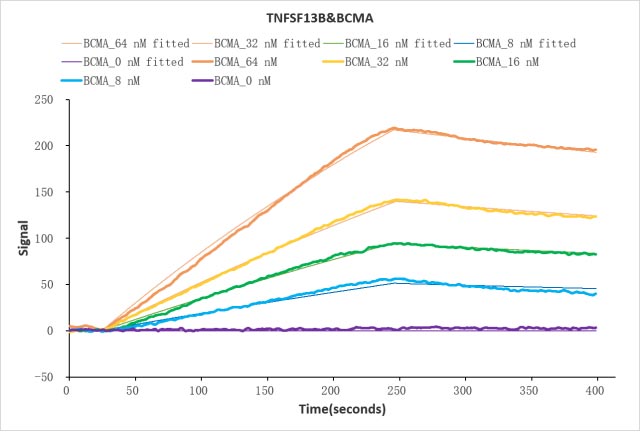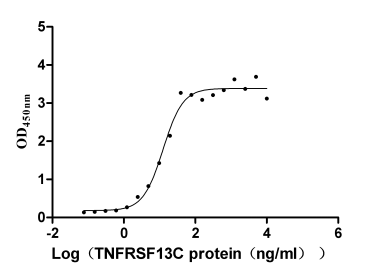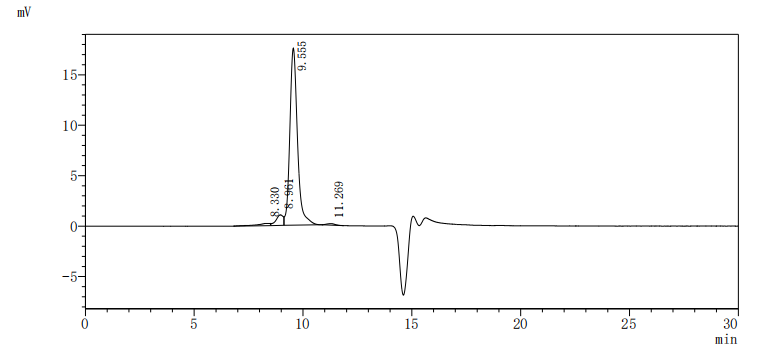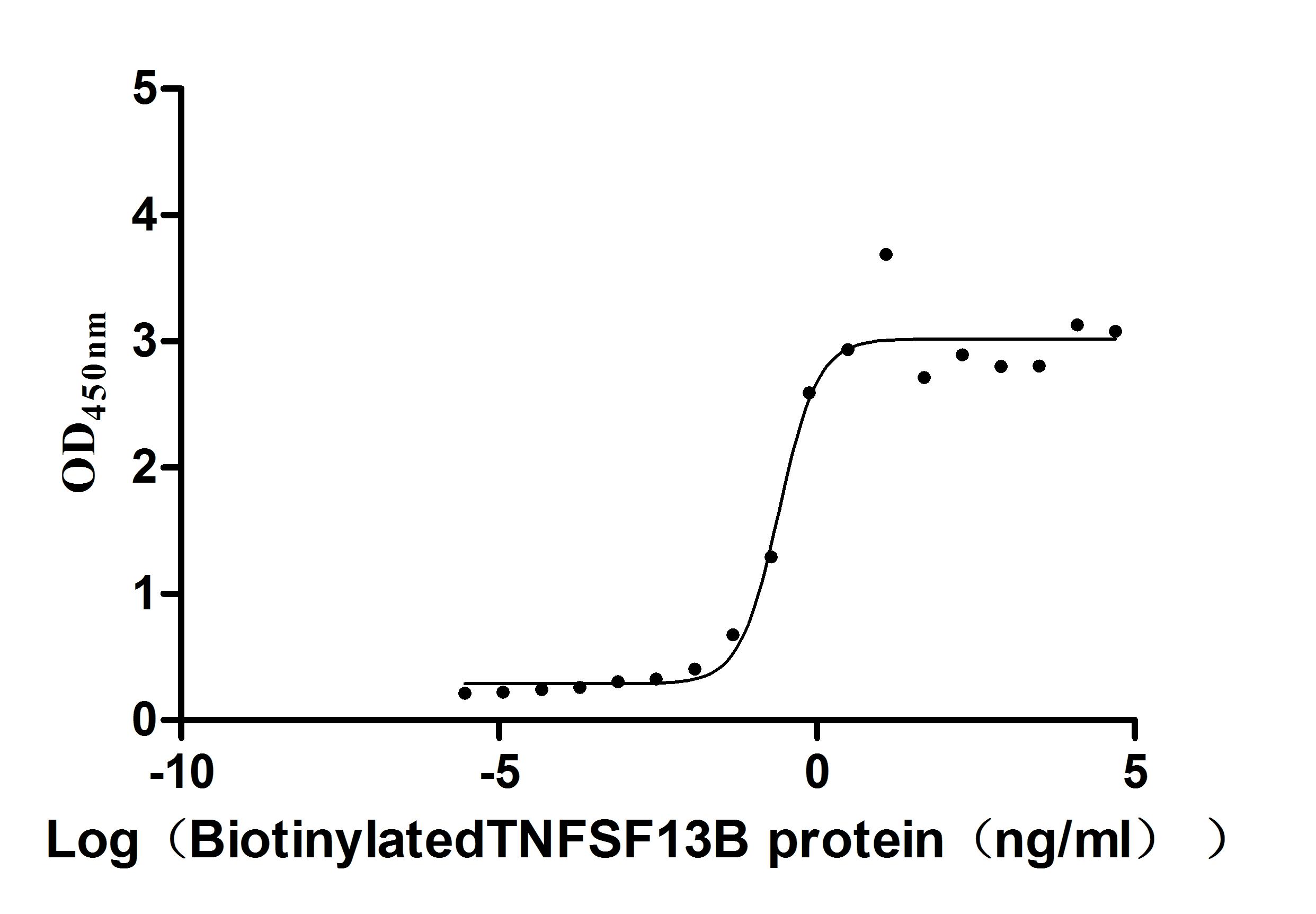The active recombinant human tumor necrosis factor ligand superfamily member 13B (TNFSF13B) is expressed from mammalian cells, with an N-terminal hFc-tag. Its expression region maps within amino acid residues Ala134-Leu285 of the human TNFSF13B protein. This recombinant human TNFSF13B protein is characterized by high purity (>90%, SDS-PAGE), low endotoxin (<1.0 EU/ug protein, LAL method), and relatively high bioactivity. In the functional ELISA, the immobilized TNFSF13B can bind to the human BCMA or TNFRSF13C, with an EC50 constant of 221.3-298.6 ng/ml and 9.943-15.72 ng/ml, respectively. In the LSPR assay, the human TNFSF13B protein captured on the COOH chip can bind to the human BCMA, with an affinity constant of 39 nM. And it is in stock now.
TNFSF13B, also known as BAFF, plays an important role in the proliferation and differentiation of B cells. It also influences antibody class switch. TNFSF13B is involved in the pathophysiology of pulmonary diseases.


